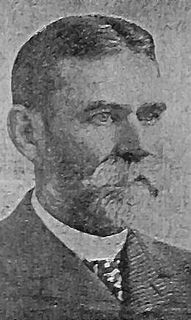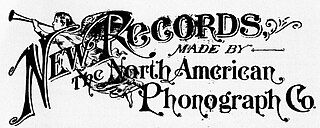
A phonograph, in its later forms also called a gramophone or since the 1940s called a record player, is a device for the mechanical recording and reproduction of sound. The sound vibration waveforms are recorded as corresponding physical deviations of a spiral groove engraved, etched, incised, or impressed into the surface of a rotating cylinder or disc, called a "record". To recreate the sound, the surface is similarly rotated while a playback stylus traces the groove and is therefore vibrated by it, very faintly reproducing the recorded sound. In early acoustic phonographs, the stylus vibrated a diaphragm which produced sound waves which were coupled to the open air through a flaring horn, or directly to the listener's ears through stethoscope-type earphones.

Phonograph cylinders are the earliest commercial medium for recording and reproducing sound. Commonly known simply as "records" in their era of greatest popularity, these hollow cylindrical objects have an audio recording engraved on the outside surface, which can be reproduced when they are played on a mechanical cylinder phonograph. In the 1910s, the competing disc record system triumphed in the marketplace to become the dominant commercial audio medium.

The Victor Talking Machine Company was an American record company and phonograph manufacturer headquartered in Camden, New Jersey.

The Columbia Graphophone Company Limited was one of the earliest gramophone companies in the United Kingdom.

Emile Berliner, originally Emil Berliner, was a German-American inventor. He is best known for inventing the vertical-cut flat disc record used with a phonograph. He founded the United States Gramophone Company in 1894, The Gramophone Company in London, England, in 1897, Deutsche Grammophon in Hanover, Germany, in 1898, Berliner Gram-o-phone Company of Canada in Montreal in 1899, and Victor Talking Machine Company in 1901 with Eldridge Johnson.
The Gramophone Company Limited , based in the United Kingdom and founded on behalf of Emil Berliner, was one of the early recording companies, the parent organisation for the His Master's Voice (HMV) label, and the European affiliate of the American Victor Talking Machine Company. Although the company merged with the Columbia Graphophone Company in 1931 to form Electric and Musical Industries Limited (EMI), its name "The Gramophone Company Limited" continued in the UK into the 1970s.

Charles Sumner Tainter was an American scientific instrument maker, engineer and inventor, best known for his collaborations with Alexander Graham Bell, Chichester Bell, Alexander's father-in-law Gardiner Hubbard, and for his significant improvements to Thomas Edison's phonograph, resulting in the Graphophone, one version of which was the first Dictaphone.

The Graphophone was the name and trademark of an improved version of the phonograph. It was invented at the Volta Laboratory established by Alexander Graham Bell in Washington, D.C., United States.

Dan W. Quinn was one of the first American singers to become popular in the new medium of recorded music. Quinn was a very successful recording artist whose career spanned from 1892 to 1918. Quinn recorded many of his hits in the legendary Tin Pan Alley of New York City.
Henry B. Babson was an American entrepreneur, investor in phonograph technology, and notable breeder of Arabian horses. He moved to Chicago at the age of 17 at the urging of inventor Leon Douglass. While working at the 1893 World's Columbian Exposition, better known as the Chicago World Fair, Babson first encountered purebred Arabian horses brought from the Middle East for exhibition, and decided that some day he would own such horses for himself.
Erastus A. Benson (1854–1932) was a banker, investor and land speculator in Omaha, Nebraska. Born and raised in Iowa, after graduating from the University of Iowa Benson speculated in land around Omaha. After investing in early business ventures in the phonograph and the Kinetoscope, Benson staged an unsuccessful bid to become the mayor of Omaha. In addition to being one of the inaugural members of the influential National Phonograph Association, the former town of Benson, Nebraska was named after him.

The Volta Laboratory and the Volta Bureau were created in Georgetown, Washington, D.C. by Alexander Graham Bell.

Leon Forrest Douglass was an American inventor and co-founder of the Victor Talking Machine Company who registered approximately fifty patents, mostly for film and sound recording techniques.

The North American Phonograph Company was an early attempt to commercialize the maturing technologies of sound recording in the late 1880s and early 1890s. Though the company was largely unsuccessful in its goals due to legal, technical and financial problems, it set the stage for the modern recording industry in the mid 1890s.

The United States Phonograph Company was a manufacturer of cylinder phonograph records and supplies in the 1890s. It was formed in the Spring of 1893 by Victor Emerson, manager of the New Jersey Phonograph Company. Simon S. Ott and George E. Tewkesbury, heads of the Kansas Phonograph Company and inventors of an automatic phonograph joined later. It was based in Newark, New Jersey. After the collapse of the North American Phonograph Company in August 1894, the United States Phonograph Company became one of the industry's largest suppliers of records, competing mostly with the Columbia Phonograph Company who had joined with the American Graphophone Company to manufacture graphophones, blank wax cylinders, and original and duplicate records. The USPC manufactured duplicates as well, which allowed their recording program to reach the scale of competing with Columbia's. Their central location and proximity to New York allowed them to record the most popular artists of the 1890s, including George J. Gaskin, Dan W. Quinn, Len Spencer, Russell Hunting and Issler's Orchestra. Emerson left the company to lead Columbia's recording department around the summer of 1896. In 1897 the USPC worked with Edison's National Phonograph Company to retrofit phonographs with spring motors invented by Frank Capps. The convenience and cost savings of spring-motor phonographs like these helped shift the phonograph from a public entertainment to a consumer good. In October 1899 the company was prohibited by court order from manufacturing duplicate records, and they began supplying original records for the National Phonograph Company[7][7][6][6][5][5]. The later U.S. Phonograph Company of Cleveland Ohio is unrelated.
Edison Bell was an English company that was the first distributor and an early manufacturer of gramophones and gramophone records. The company survived through several incarnations, becoming a top producer of budget records in England through the early 1930s until, after it was absorbed by Decca in 1932, production of various Edison Bell labels ceased.

Walcutt and Leeds was a manufacturer and dealer of cylinder records and supplies in the 1890s. It was formed in February 1896 by Cleveland Walcutt and Edward F. Leeds at 53 E. 11th St. in New York City. Walcutt and Leeds had previously been partners in the firm Walcutt, Miller & Co., which had purchased the record manufacturing plant of the North American Phonograph Company at 120 E. 14th St. in New York City, including a large stock of records, blanks, and recording phonographs.

Estella Louise Mann was an American singer, recording artist, and record executive active in New York in the 1890s. She was one of the first women to make a living as a recording artist, and the first woman to run a record company.

Frank P. Banta was an American pianist and recording artist active in the 1890s and 1900s.















